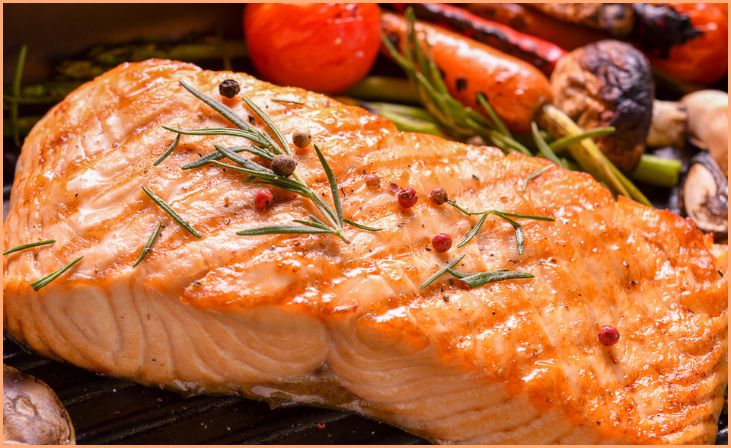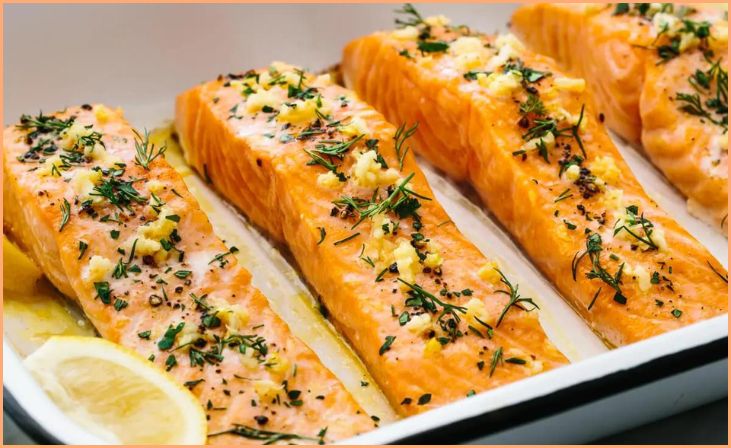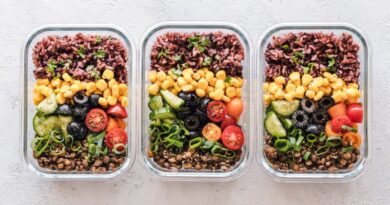The article contains the description of, “How to know if salmon is cooked?” A healthy, tasty, and versatile protein, Salmon fish is loved by many. You can grill, bake, or pan-fry it. However, Salmon can quickly go from raw to overcook if you’re not paying attention, just like cooking steaks.
Globally, salmon fish is one of the most consumed fish, right after tuna. With it, you can pair it with just about any dinner, but it isn’t too elegant to eat it with fries. Despite how you cook your Salmon, knowing when it is done is key to ensuring that it isn’t under or overcooked. In many cases, people mistake using a fork and knife to check if the Salmon fish is fully cooked, leading to butchering your salmon fillet several times. We’ve all done it before, so don’t feel bad if you do.
How to Know if Salmon is Cooked?

You can check through different ways and clearly define “how to know if salmon is cooked?”
Try the following method
- Texture and Color
To check if a salmon fish has been thoroughly cooked, first look at its color and texture. During cooking, Salmon changes color from a raw deep reddish color to a light pinkish color. During the cooking process, Salmon will also become crisper than its soft and mushy raw form. Salmon cooked to perfection has a flaky texture that allows you to tell when it’s done. When the top of your Salmon easily flakes apart, it is ready; if it is not flaky or still displays a reddish hue, it is still raw and needs a longer cooking time.
Also Read- How to tell if Salmon is Bad
- Through Butter Knife
Simple and quick, this method can be used for checking the doneness of a task. Insert the butter knife into the thickest part of the fillet, remove it and touch the knife to your bottom lip. It still needs to be cooked a bit longer if the knife feels lukewarm. Your ideal temperature is medium warm. It takes a little practice to use this method, but it’s pretty reliable. To determine whether it’s the right color, cut it into the thickest part before removing it from the heat.
- Thermometer
Checking whether the Salmon fish is ready to serve can be done using the simplest and most accurate method. Any food-grade thermometer can be inserted into the thickest part of your Salmon. The FDA recommends eating Salmon at a temperature of 145 F, which is slightly firmer and well-done than the average temperature. People who prefer their salmon medium to medium-rare should aim for an internal temperature of 125 to 140 degrees Fahrenheit.
How to Cook Salmon In the Oven?

- First, Preheat the oven to 425°F and place a rack in the middle. Wrap foil around a baking sheet or roasting pan.
- Pat the salmon dry with a paper towel.
- Use your fingers or a pastry brush to rub some oil over the top of each Salmon – just enough to coat it. Add generous amounts of salt and pepper to the salmon.
- Salmon should be placed skin-side up in the roasting pan. Place in the oven.
- A salmon’s cooking time is determined by its thickness, measured by the thickest part of the fillet. Salmon that is half-inch thick takes 4 to 6 minutes to roast – 4 minutes will leave it a touch rare, and 6 minutes will it completely roasted.
- A fork is also a good tool for checking whether your Salmon fish is done. When the Salmon is cooked, it can be flaked with a fork. Check the fish’s doneness with an instant-read thermometer if you wish. A minimum internal temperature of 145°F should be measured at the thickest part of the fillet, as recommended by the USDA.
- Salmon is ready to be enjoyed immediately. It is fine to keep leftovers refrigerated for up to 5 days and microwave or use cold.
How To Cook Salmon In The Skillet
- You don’t have to go to a restaurant to acquire salmon fillets with golden topping and crusty coats. When you cook salmon in a skillet, you can achieve it correctly in your own kitchen.
- Heat up a non-stick or cast-iron skillet over medium to high heat and cover the base of the skillet with fats such as vegetable oil, olive oil, and butter.
- When the skillet is hot, put the salmon fillet on top and prepare for about 6 minutes, that depends on the size of the chunks.
- At this point, the topping is fully formed and the fillet can simply pop out of the skillet and turn over with the skin down. If the salmon doesn’t come off effortlessly, cook for a couple of seconds longer.
- After turning it over, cook for another 4 minutes until the skin is crunchy. The midpoint of the fillet may be thicker than the edges.
- If the skin is too crunchy and the midpoint of the salmon is a little pink and hard, put the skillet in a 350 ° oven and cook for 5 minutes.
How To Roast Salmon

Another easy way to make salmon is this sheet pan of grilled salmon and vegetables that gives you a whole meal in just one pan. If you don’t follow the recipe, try the following simple steps.
- Preheat the oven to 350 ° F and line the large baking sheet with parchment paper or aluminum foil.
- The spice to taste. There are many ways to flavor fish, including garlic, spice rubs, honey, citrus fruits, and herbs.
- Cook the salmon rind or outside down for 12 to 15 minutes or until it is opaque and pink.
How To Grill Salmon
- Preheat the grill to a high temperature and place it in the oven box in the top third of the oven so that the salmon is about 5 inches from the coils of your microwave oven.
- Place the fillet on a baking sheet lined with parchment or aluminum foil (this will protect adhering and make cleaning easier) and season with salt, pepper, and your favorite herbs and spices.
- Grill for 5-8 minutes, depending on the size of the fillet and the desired baking.
I hope now you find out, “How to know if salmon is cooked?’ Hopefully, my article is proved to be useful to you!
Salmon Health Benefits
Omega-3 Fatty Acids

Salmon is a nutritional powerhouse known for its abundance of omega-3 fatty acids, notably EPA (eicosapentaenoic acid) and DHA (docosahexaenoic acid). These essential fatty acids play a pivotal role in supporting overall health. Renowned for their cardiovascular benefits, omega-3s contribute to reducing inflammation, improving heart function, and lowering the risk of chronic diseases. Additionally, these fatty acids are crucial for brain health, aiding cognitive development and potentially reducing the risk of neurodegenerative disorders. Incorporating salmon into your diet provides a delicious and effective way to ensure an optimal intake of omega-3s, promoting both heart and brain well-being.
Protein Powerhouse
Salmon stands as a protein powerhouse, offering a rich source of high-quality protein essential for various aspects of health. Protein is crucial for muscle development, repair, and maintenance, making salmon an ideal choice for those looking to support their fitness goals. The protein content in salmon also aids in weight management by promoting a feeling of fullness and contributing to the body’s energy expenditure. This nutrient-dense fish provides a delicious and versatile protein source that not only satisfies the taste buds but also supports overall well-being, making it a valuable addition to a balanced and nutritious diet.
Vitamin D Boost
Salmon offers a significant Vitamin D boost, making it a valuable addition to a well-rounded diet. Vitamin D is essential for various bodily functions, including maintaining strong and healthy bones, supporting the immune system, and regulating calcium levels. Salmon is a natural source of this vital vitamin, providing an efficient way to meet daily requirements. Whether grilled, baked, or poached, incorporating salmon into your meals not only adds a flavorful element but also contributes to overall health by ensuring an adequate intake of Vitamin D, particularly beneficial for bone health and immune system support.
Rich in B Vitamins
Salmon is rich in B vitamins, including B12 and niacin, offering a spectrum of health benefits. Vitamin B12 is crucial for nerve function, red blood cell formation, and overall energy metabolism. Niacin, another B vitamin present in salmon, plays a role in cellular health, aiding in energy production and supporting the cardiovascular system. These B vitamins contribute to the body’s overall well-being, promoting optimal metabolism, cognitive function, and cardiovascular health. Incorporating salmon into your diet provides a flavorful and nutrient-dense way to ensure an adequate intake of these essential B vitamins, supporting various aspects of your health.
Astaxanthin Antioxidant
Salmon contains astaxanthin, a powerful antioxidant responsible for its vibrant color. Astaxanthin is renowned for its ability to neutralize free radicals, protecting cells from oxidative stress and inflammation. As an antioxidant, it contributes to skin health, supports the immune system, and may play a role in reducing the risk of chronic diseases. Astaxanthin’s unique properties also extend to eye health, potentially lowering the risk of age-related macular degeneration. Including salmon in your diet provides a delicious and natural source of astaxanthin, enhancing the antioxidant defenses in your body and contributing to overall health and well-being.
Promotes Eye Health
Salmon promotes eye health with its rich content of omega-3 fatty acids and the antioxidant astaxanthin. Omega-3s, such as DHA, are essential for maintaining the structure and function of the eyes, contributing to optimal vision. Astaxanthin, the pigment responsible for salmon’s pink hue, is a potent antioxidant that helps protect the eyes from oxidative stress, potentially reducing the risk of age-related macular degeneration and promoting overall eye health. Including salmon in your diet provides a flavorful and nutritious way to support your vision, ensuring that your eyes receive essential nutrients for optimal function and protection against age-related eye conditions.
Also Read- 10 Healthiest High Protein Beans
Conclusion
In concluding our guide on “How to Know if Salmon is Cooked,” mastering the art of perfectly cooked salmon is not only a culinary skill but also a crucial aspect of ensuring both flavor and safety. From assessing the color and texture to using a thermometer for precision, these techniques empower you to confidently prepare salmon dishes that are not only delicious but also safe to eat. By understanding the visual cues and employing proper cooking methods, you elevate your salmon-cooking expertise, creating meals that delight the palate and contribute to a wholesome dining experience. So, whether you prefer your salmon tender and moist or well-done and flaky, these insights ensure that each bite is a culinary triumph.
FAQs
Visual cues include the change in color from translucent to opaque and the flesh turning from glossy to matte. Additionally, the fish should flake easily with a fork.
The FDA recommends cooking salmon to an internal temperature of 145°F (63°C). At this temperature, the salmon is safe to eat, moist, and flavorful.
Consuming slightly undercooked salmon poses a risk of foodborne illness. It’s crucial to ensure that the salmon reaches the recommended internal temperature to eliminate any potential pathogens.







